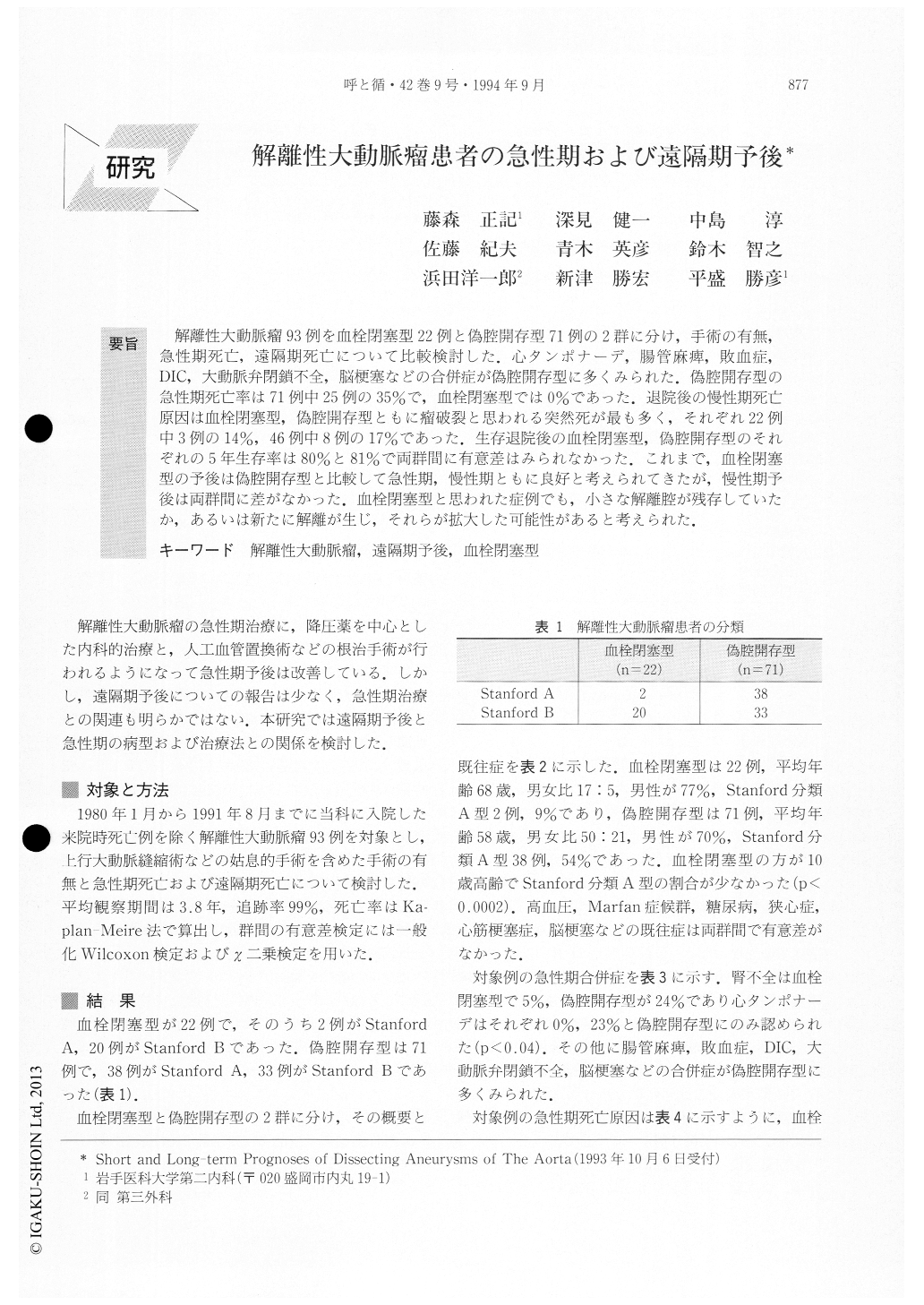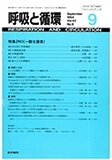Japanese
English
- 有料閲覧
- Abstract 文献概要
- 1ページ目 Look Inside
解離性大動脈瘤93例を血栓閉塞型22例と偽腔開存型71例の2群に分け,手術の有無,急性期死亡,遠隔期死亡について比較検討した.心タンポナーデ,腸管麻痺,敗血症,DIC,大動脈弁閉鎖不全,脳梗塞などの合併症が偽腔開存型に多くみられた.偽腔開存型の急性期死亡率は71例中25例の35%で,血栓閉塞型では0%であった.退院後の慢性期死亡原因は血栓閉塞型,偽腔開存型ともに瘤破裂と思われる突然死が最も多く,それぞれ22例中3例の14%,46例中8例の17%であった.生存退院後の血栓閉塞型,偽腔開存型のそれぞれの5年生存率は80%と81%で両群間に有意差はみられなかった.これまで,血栓閉塞型の予後は偽腔開存型と比較して急性期,慢性期ともに良好と考えられてきたが,慢性期予後は両群間に差がなかった.血栓閉塞型と思われた症例でも,小さな解離腔が残存していたか,あるいは新たに解離が生じ,それらが拡大した可能性があると考えられた.
A total of 93 patients with acute aortic dissections were categorized into two groups; thrombosed type (n=22) and non-thrombosed type (n=71). The two groups were then examined with respect to short and long-term prognoses. The patients in the non-throm-bosed group had many complications that included cardiac tamponade, intestinal paralysis, sepsis, DIC, aortic valve regurgitation and cerebral infarction. The mortality rate in the acute phase was 35% in the non-thrombosed group, and 0% in the thrombosed group.

Copyright © 1994, Igaku-Shoin Ltd. All rights reserved.


